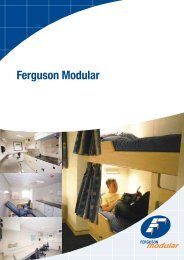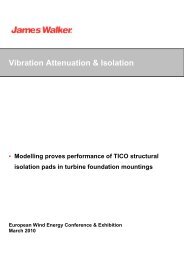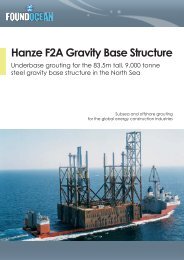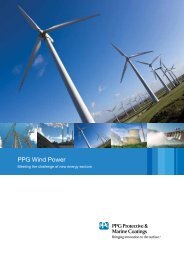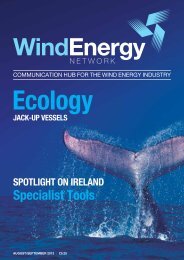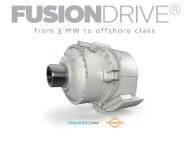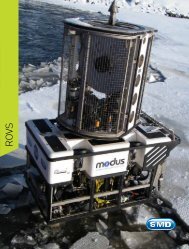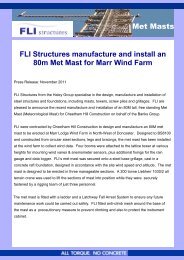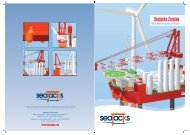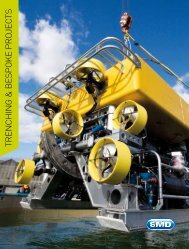Walney Offshore Windfarm Substation P1 Case Study - FoundOcean
Walney Offshore Windfarm Substation P1 Case Study - FoundOcean
Walney Offshore Windfarm Substation P1 Case Study - FoundOcean
- No tags were found...
You also want an ePaper? Increase the reach of your titles
YUMPU automatically turns print PDFs into web optimized ePapers that Google loves.
Milestone cemented for <strong>Walney</strong> with theinstallation of the <strong>Offshore</strong> <strong>Substation</strong> <strong>P1</strong>ABOUT THE WALNEY OFFSHORE WINDFARMThe <strong>Walney</strong> <strong>Offshore</strong> <strong>Windfarm</strong> is 15km from thecoastline of <strong>Walney</strong> Island in a north west to southeasterlydirection covering approximately 73km 2 .The <strong>Walney</strong> 1 <strong>Windfarm</strong> consists of 51 turbines eachwith a capacity of 3.6MW, powering 160,000 UKhouseholds. When <strong>Walney</strong> 2 comes online the totalwill increase to 320,000 UK households.The windfarm turbine array consists of a number ofrows of wind turbines connected by one cable from<strong>Walney</strong> 1 and one from <strong>Walney</strong> 2 which will carrythe power to shore. The substation has a typical fourleg jacket style foundation. The foundations for theturbines are monopiles.Key Project FactsOperatorDONG EnergyContractorVSFRegionIrish SeaWater depth -30mTotal cement 51.48 tonnesCrew size 4Equipment12V Grout Mixer with builtin grout pump1 x 40 tonne cement silo1 x 35 tonne cement siloLab and RefrigeratorUmbilical Hose WinchHosesGrout specification 10.04 MPa @ 24 hours78.56 MPa @ 28 daysCuring temperature 8 o cMobilisation port Rotterdam, NetherlandsInstallation vessel RambizFOUNDATION DESCRIPTIONThe jacket is of steel construction with 4 legs. It issecured to the sea bed by 4 main piles driven throughthe sleeves. The piles are OD 1,829mm driven throughsleeves of ID 1,990mm. The connection between thedriven piles and the jacket was made by injectinga cement grout into the annulus around each pile.Thus, the structural integrity of the platform wasdependent on the correct placement and retentionof good quality grout in the annulus of each pile.The lower end of each annulus was equipped withtwin grout seals to retain the grout. Each sleeve hada primary and secondary grout line through whichgrout could be pumped into the annulus.A conventional grouting system has been designedfor the installation of the jacket. The pile sleeves areequipped with primary and secondary grout linesterminating at elevation +16.3m. The lower end ofeach pile sleeve is equipped with an Oil States typegrout seal, the purpose of which is the retention ofthe grout in the annulus whilst it is curing.QUALITY CONTROLDuring mixing, the grout density was monitored atintervals using a pressurised slurry density balance.Three samples were taken during the grouting ofeach annulus: one after 10 bbl had been pumped,one halfway through grouting, and one towardsthe end of grouting. For each sample the densitywas recorded and three 75mm grout cubes weremanufactured. Each cube was marked to identifythe platform, leg number, time and date of castingand the specific gravity. The samples were curedunderwater at 8 o c ± 0.2 o c.THE MIXING SYSTEMCement was stored in bulk pressurised silos anddelivered to a surge tank above the mixer. Waterwas delivered to the mixer from the barge fire



